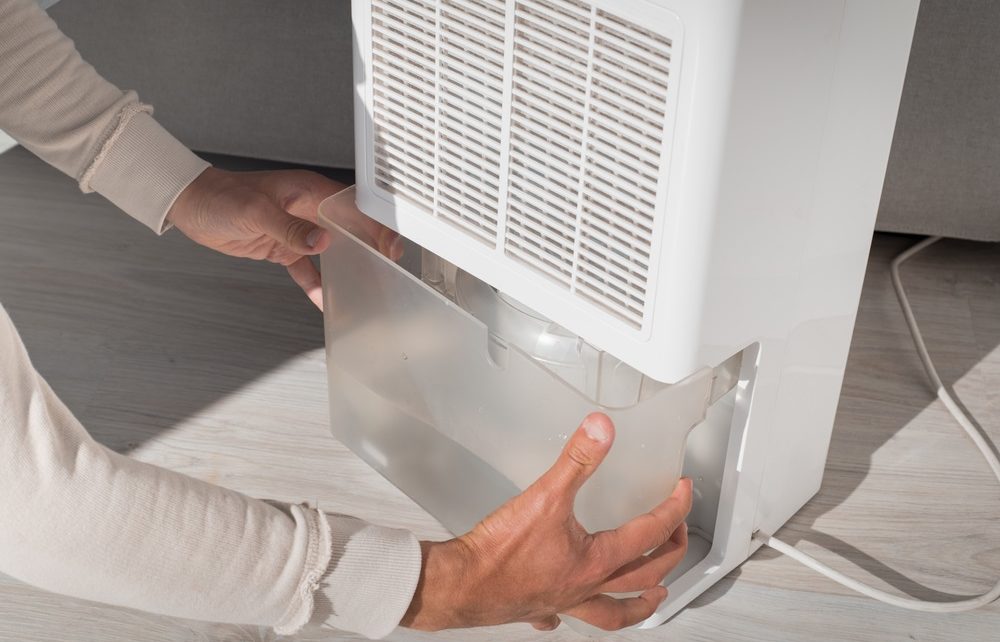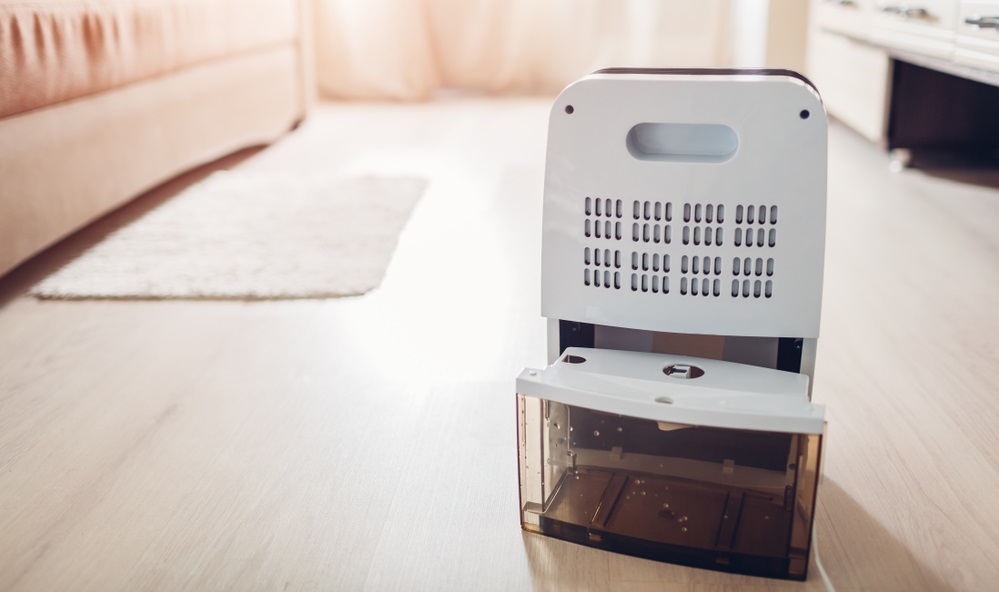
Humidifiers are a great tool to help regulate the humidity of your space. They suck moisture out of the air and lower the relative humidity in the process. It’s always interesting to see how much moisture they can really collect but if you find yourself wondering how much water should a dehumidifier collect in a day, we tell you what’s normal and what affects that amount in the first place.
Some use compressors to pull in the moisture in the air. The water that comes out of the air goes in the water basin of the dehumidifier. This basin fills up with water over time, but the time it takes to fill up differs.
How much water a dehumidifier collects in a day depends on the amount of moisture in the air, the capacity of the water basin, and the size of the dehumidifier. Knowing how much water dehumidifiers collect can help you determine how well it works to reduce moisture in the air.
Why Do Dehumidifiers Collect Water?
Dehumidifiers collect water from the air. Their purpose is to lower humidity levels in a given space and keep them down. Lowering the relative humidity requires removing water from the air in the room and collecting it inside a tank so it won’t disperse back into the air.
While humidifiers spray water into the air, dehumidifiers do the opposite. Rather than emitting water, the dehumidifier works similarly to a refrigerator: It allows the air to pass over cold coils that result in condensation. This condensation then drips into a water tank to be emptied.
A full water tank means your dehumidifier is working well and reducing the humidity in the space.
How Much Water Should a Dehumidifier Collect in a Day?
The amount of water collected by a dehumidifier in a day depends on the size and capacity of the unit. It also varies depending on the relative humidity levels in the space.
An average-sized humidifier for residential space will collect up to 20 liters of water over a day. A commercial, larger dehumidifier can collect up to 50 liters on a given day. To fill a 2-liter tank, which is a common-sized tank for standard dehumidifiers, it takes about six to seven hours. To that end, a small domestic dehumidifier will need to be emptied out a few times per day, depending on the relative humidity.
If your small dehumidifier is filling up every few hours, this is because of the excess moisture in the air. This is a sign that your dehumidifier is working at maximum capacity to remove the water from the air.
How Long do Dehumidifiers Take to Start Working?
Dehumidifiers should begin pulling moisture from the air the moment they are turned on. If your dehumidifier has been on for a few hours but hasn’t collected any water, it may be defective, or your moisture levels may be lower than you realize.
Benefits of Dehumidifiers
Dehumidifiers have many benefits to offer, making them a worthwhile investment. These are some of our favorite features and benefits:
- Dehumidifiers reduce and eliminate musty odors caused by dampness. These smells can make people uncomfortable, and removing them from your space is virtually guaranteed to make your living situation more pleasant.
- They reduce the risk of health conditions that can develop from exposure to mold, mildew, dust mites and other allergens that create stuffy and stale air in your space.
- Dehumidifiers can save energy consumption by reducing the power an air conditioner has to use to cool a home. When humidity levels are regulated, appliances like air conditioners don’t have to work as hard.
Bottom Line
Dehumidifiers are excellent and helpful appliances that can make a world of difference in your home. Living in a humid or damp area can undoubtedly be uncomfortable, so dehumidifiers can really come in handy in these types of environments.

Dehumidifiers are only useful if they are sucking moisture out of the air, decreasing the relative humidity levels. So it is necessary to understand how your dehumidifier collects water to ensure it works properly. Knowing the amount of water that should be in your water basin after hours of use can help you gauge how efficiently the dehumidifier is.
FAQs
What happens if my water basin overflows?
Almost all room dehumidifiers have an automatic shut-off when the water tank fills. So once the water basin is full, the dehumidifier will stop pulling moisture from the air until the tank is emptied and replaced.
What if my dehumidifier isn’t collecting water?
The best reason for your dehumidifier not collecting water is that the air adjusts to the ideal moisture levels, therefore there is nothing for the dehumidifier to collect.
But this could also mean your dehumidifier is not working correctly. This can be because of a malfunction, but they also tend to cease working when temperatures in the space drop below 65 degrees or more.
When will my dehumidifier stop collecting water?
The dehumidifier will cease water collection when the humidity in the air has reached the desired level. If there is no excess moisture in the air, the dehumidifier won’t continue pulling in moisture.
Can dehumidifiers help after a flood?
Yes, dehumidifiers can help suck moisture from soft surfaces like carpets or wet couches due to a flood. Dehumidifiers can’t soak up standing water like puddles on the floor but will work to remove water from absorbent surfaces.
To clean up after a flood, a commercial dehumidifier combined with fans is the best method to dry everything.
Does every dehumidifier collect water?
Yes, all dehumidifiers collect water to lower the humidity of a designated space. If you think it is a room dehumidifier, but it doesn’t have a water basin, it may just be an air purifier that doesn’t affect humidity levels.
